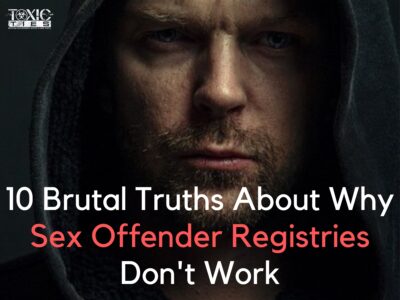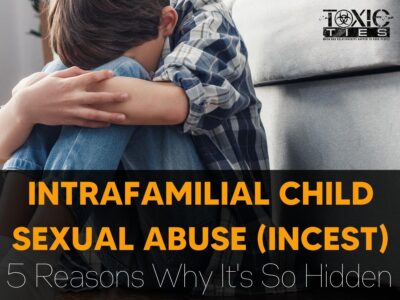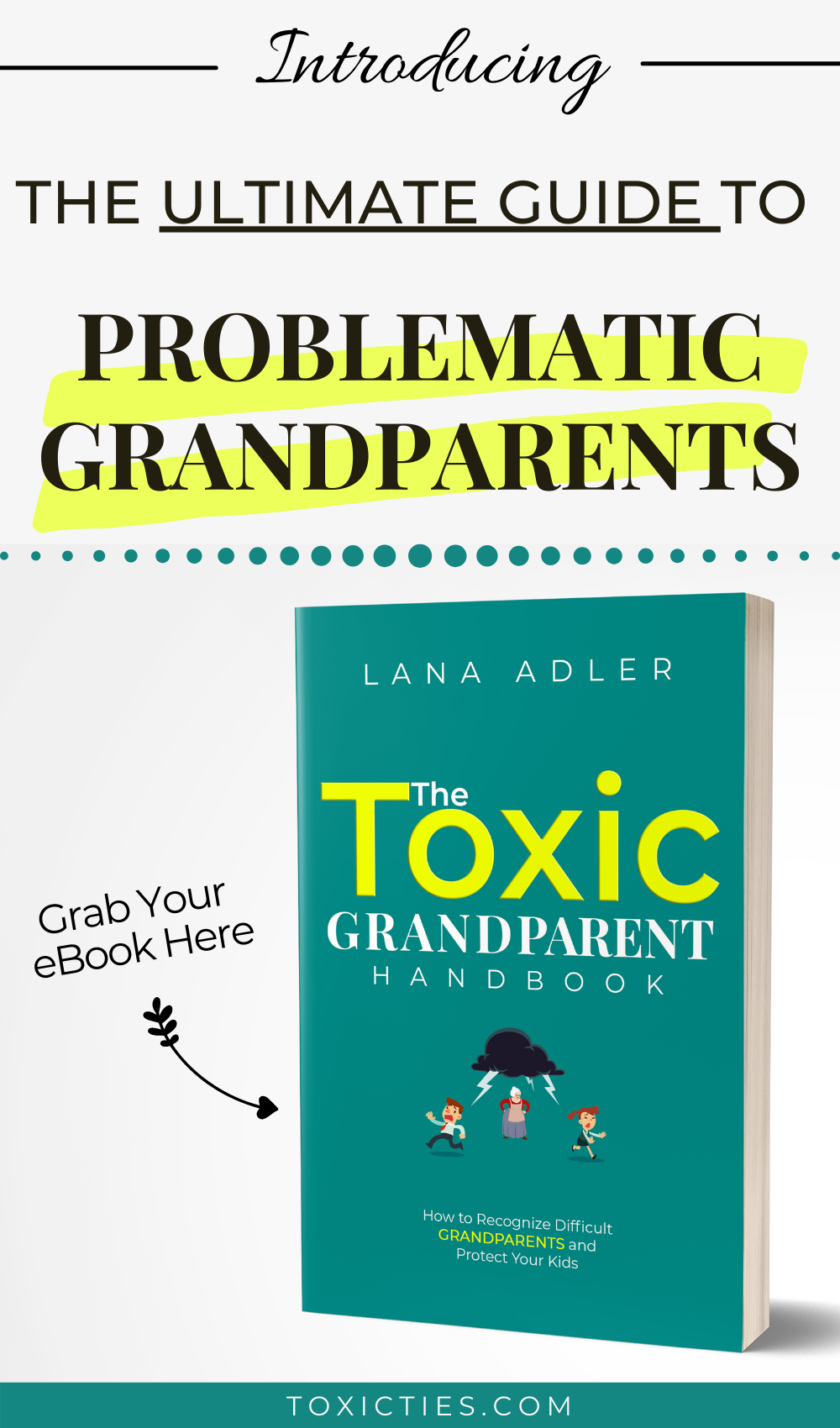Any type of child abuse is reprehensible. But child sexual abuse is unspeakably evil because it destroys the child’s innocence — the most precious thing children possess.
And like any true evil, it is cloaked in silence and secrecy.
This post intends to shed some light on the issue. It will discuss
- what child sexual abuse is
- how common it is
- risk factors for being sexually abused
- characteristics of sexually abusive individuals
- important red flags of child sexual abuse
- how being molested can affect a child
- prevention tips for parents
- essential resources on the topic
What is Child Sexual Abuse?
Simply put, child sexual abuse (CSA) is sexual activity with a minor.
A common misperception about child sexual abuse is that it only refers to having sex with a child.
In reality, it is much more nuanced. It encompasses a number of actions — both physical and non-physical.
The US Centers for Disease Control and Prevention (CDC) defines child sexual abuse as “any completed or attempted sexual act, sexual contact with, or exploitation (i.e., noncontact sexual interaction) of a child by a caregiver.”
In this definition, sexual act refers to acts involving penetration, sexual contact refers to touching and fondling, and exploitation refers to harassment, prostitution, trafficking, or taking inappropriate photos or videos of a child.
It also encompasses other lascivious actions, like exposing a child to sexual imagery or pornography, exposing oneself to a child, or communication of a sexual nature.
In other words, involving a child in any sexual activity — be it physical or nonphysical — constitutes child sexual abuse.
Note that having a child’s “consent” is irrelevant here because legally, an underage person is unable to consent. So any sexual activity is automatically considered coercion and an abuse of trust.

Is Child Sexual Abuse Rare?
One in 5 women and 1 in 13 men report having been sexually abused as a child.
However, any estimate of child sexual abuse is based on reported cases, and many cases go unreported.
Why do they go unreported? For many reasons.
One, using a child for sexual gratification is a crime. So in cases of intrafamilial child sexual abuse, the family members may opt to shield the abuser from prosecution and deal with them personally.
Similarly, people may try to protect a respected community member from child sexual abuse allegations to avoid the stigma and the shame that comes with it. Examples of that are a legion.
Two, the child may be reluctant or unwilling to report the abuse for fear of retaliation or other consequences.
Three, small children may be unaware that they are being abused. Even when the child victim is older, they may still not understand that what happened to them was abuse.
Four, a child may be too young to verbalize the abuse, so they’re unable to speak for themselves.
Five, the definition of child sexual abuse is culturally ambiguous and depends on a particular group’s beliefs and legal norms.
As a result, child sexual abuse often goes unnoticed and unreported.
In sociological terms, it has a large dark figure, which refers to the gap between the actual incidence of abuse and the number of cases reported.
Risk Factors for Child Sexual Abuse
Although any child could be potentially a target of sexual abuse, research shows that there are certain risk factors that make it more likely to happen.
These factors include gender, age, sexual orientation, disability status, and psychological characteristics of the child.
In regards to gender, girls are 4 times more likely to be sexually abused than boys.
Another risk factor is age. Surveys show that children are most likely to be abused between the ages of 14 and 17.
Sexual minorities and children with disabilities seem to also be at higher risk for sexual abuse.
Finally, emotional characteristics such as low self-esteem, emotional immaturity, high suggestibility, eagerness to please, loneliness, neediness, poor social skills, shyness, having no or few friends, and passivity are associated with a higher incidence of abuse.
While these characteristics can increase the likelihood of molestation, it’s important to remember that children are never to blame for any type of abuse.
Characteristics of Sexually Abusive Individuals
Based on research, a child abuser is more likely to be a person with
- a history of child abuse or maltreatment
- high sex drive
- a drug or alcohol problem (disinhibitors)
- a low socioeconomic class background
- behavioral problems and social deficits
- and lower IQ
Of course, these are generalizations. They don’t describe each and every child molester. In fact, in some ways, these descriptions are misleading.
As we saw with the Catholic Church scandals and other high-profile cases of child sexual abuse, these types of offenders are often smart, educated men in positions of power or authority.
They know how to blend in, gain a child’s trust, and fool everyone around them. That takes intelligence!
As a result, they can often get away with abusing children for years or even decades.
According to police, child molesters who “hide in plain sight” are likely to be
- males
- married
- more comfortable around children than adults
- employed in positions that involve interaction with children
- involved in charities supporting children
- attracted to a specific age group and gender
- looking for an emotional (as well as sexual) relationship with a child
- convinced that engaging in sexual acts with a child is an expression of love for that child (based on Oakdale Police Department Predatory Offender Community Notification and Education Packet)

Are All Sexually Abusive Individuals Pedophiles?
Not necessarily.
While child sexual abuse is certainly fueled by pedophilia, an argument can be made that it is often a crime of opportunity rather than a conscious sexual preference for children.
Like other sex offenders, sexually abusive people prefer victims who are weaker, easy to manipulate, and unlikely to report the abuse.
Children are perfect targets because they can’t always understand what is happening to them. Even if they do understand, they are often “groomed” to protect the abuser.
Not only that, a recent study of violent sex offenders also showed that sexual gratification isn’t the motivation behind most sex crimes.
The study concluded that to those offenders, violating a child was their way of taking revenge on the society that betrayed them, and rebelling against their own brutal childhoods.
In other words, they were as likely to rape an adult as they were to assault a child.
So child sexual abuse can’t always be understood as pedophilia.
That is not to say that all child sexual abuse is opportunistic or vengeful. Some abusers are pedophiles, in which case they are likely to have had multiple child victims.
Red Flags of Child Sexual Abuse
Sexually abused children are groomed to maintain secrecy, so they are unlikely to disclose the abuse.
That’s why it’s so important to pay attention to the child’s nonverbal cues, such as their behavior and overall demeanor.
- Not wanting to be left alone with someone
- Regressive behaviors, such as thumb-sucking or bedwetting
- Protesting when you try to remove their clothes to bathe or change
- acting out the abuse (with dolls or other children)
- sexual knowledge that’s too advanced for their age
- Change in mood or personality
- oppositional or withdrawn behavior
- Visible anxiety, fearfulness, the child is easily startled
- Unexplained psychosomatic issues, such as stomach aches or headaches
- Loss of interest in things the child used to enjoy
- for older children, substance abuse and high-risk behaviors are common
- self-harming and suicidal behaviors are also common in teenagers
Effects of Child Sexual Abuse
Sexual abuse leaves deep scars on the psyche of a child, and these scars often continue into adulthood, and even into the next generations.
Depression, anxiety, complex PTSD, and suicidality are just some of the most common symptoms. However, these cold clinical terms don’t express the true horror and agony of child sexual abuse.
The first time it happens, it shatters the child’s life into two halves: the before and the after.
The more it happens, the more likely the child is to experience trauma and other long-term effects, such as
- inability to form healthy relationships
- persistent guilt and shame
- social and/or health problems
- alcohol and/or drug abuse
- high-risk sexual behaviors
- later sexual revictimization
However, it should be noted that not all children suffer the negative psychological impact of abuse. Some seem to be more resilient than others.
Researchers speculate that self-esteem and a supportive family are essential factors that can protect an abused child from long-term damage.
Preventing Child Sexual Abuse: Tips for Parents
The best way to deal with child sexual abuse is to prevent it from happening in the first place. Here are some safety tips for parents who want to protect their children from becoming targets.
- Communicate. Talk to your children often. Nurture the trust and the connection between you. Let them know that you are on their side no matter what and they can confide in you.
- Be informed. Know who your children’s friends are and how they spend their time. Even when they’re older and don’t require much supervision, be the “uncool” parent and insist on knowing where they are at all times. Surveys show that children are most likely to be abused between the ages of 14 and 17.
- Know the signs. Be vigilant about who’s in your children’s trust circle. Look out for signs and red flags that someone might be abnormally interested in your child.
- Have “the talk.” As uncomfortable as it can be, talk to them about their physical boundaries and what to do when someone violates them. Tell them that their bodies are very special and private. Most importantly, teach them that they have a right to say NO to anything that doesn’t feel right, even if an adult is telling them to do it.
- Believe your child. Studies show that many children aren’t believed when they disclose the abuse. Believe your child when they say that someone makes them feel uncomfortable or anything else they want to share. Children don’t usually lie about those things.

Child Sexual Abuse Resources
If you’re looking for more information on childhood sexual abuse, here are some of the best online resources on the topic.
Stop it Now
Stop It Now! prevents the sexual abuse of children by mobilizing adults, families, and communities to take actions that protect children before they are harmed.
Darkness to Light empowers adults to prevent, recognize, and react responsibly to child sexual abuse through awareness, education, and stigma reduction.
RAINN (Rape, Abuse & Incest National Network) is the nation’s largest anti-sexual violence organization. It operates the National Sexual Assault Hotline (800.656.HOPE).
Provides 24/7 assistance in 170 languages to adults, children, and youth with information and questions regarding child abuse. All calls are anonymous and confidential.
Community-based and professional assistance through member organizations of the Children’s Alliance. Provides forensic interviews, treatment, medical examinations, and more using a team and family-driven model.
Prevent Child Abuse America is the nation’s oldest and largest organization committed to preventing child abuse and neglect before it happens. They promote programs and resources informed by science that enable kids, families, and entire communities to thrive.
The National Center for Missing & Exploited Children works with families, victims, private industry, law enforcement, and the public to assist with preventing child abductions, recovering missing children, and providing services to deter and combat child sexual exploitation.

References
Adams, J., Mrug, S., & Knight, D. C. (2018). Characteristics of child physical and sexual abuse as predictors of psychopathology. Child abuse & neglect, 86, 167–177. https://doi.org/10.1016/j.chiabu.2018.09.019
Bagley, C. & Mallick, K. (1999). Child Sexual Abuse and Adult Offenders. Routledge.
Murray, L. K., Nguyen, A., & Cohen, J. A. (2014). Child sexual abuse. Child and adolescent psychiatric clinics of North America, 23(2), 321–337. https://doi.org/10.1016/j.chc.2014.01.003
Wolfe, V.V. (1990). Sexual Abuse of Children. In: Bellack, A.S., Hersen, M., Kazdin, A.E. (eds) International Handbook of Behavior Modification and Therapy. Springer. https://doi.org/10.1007/978-1-4613-0523-1_33








Great article!